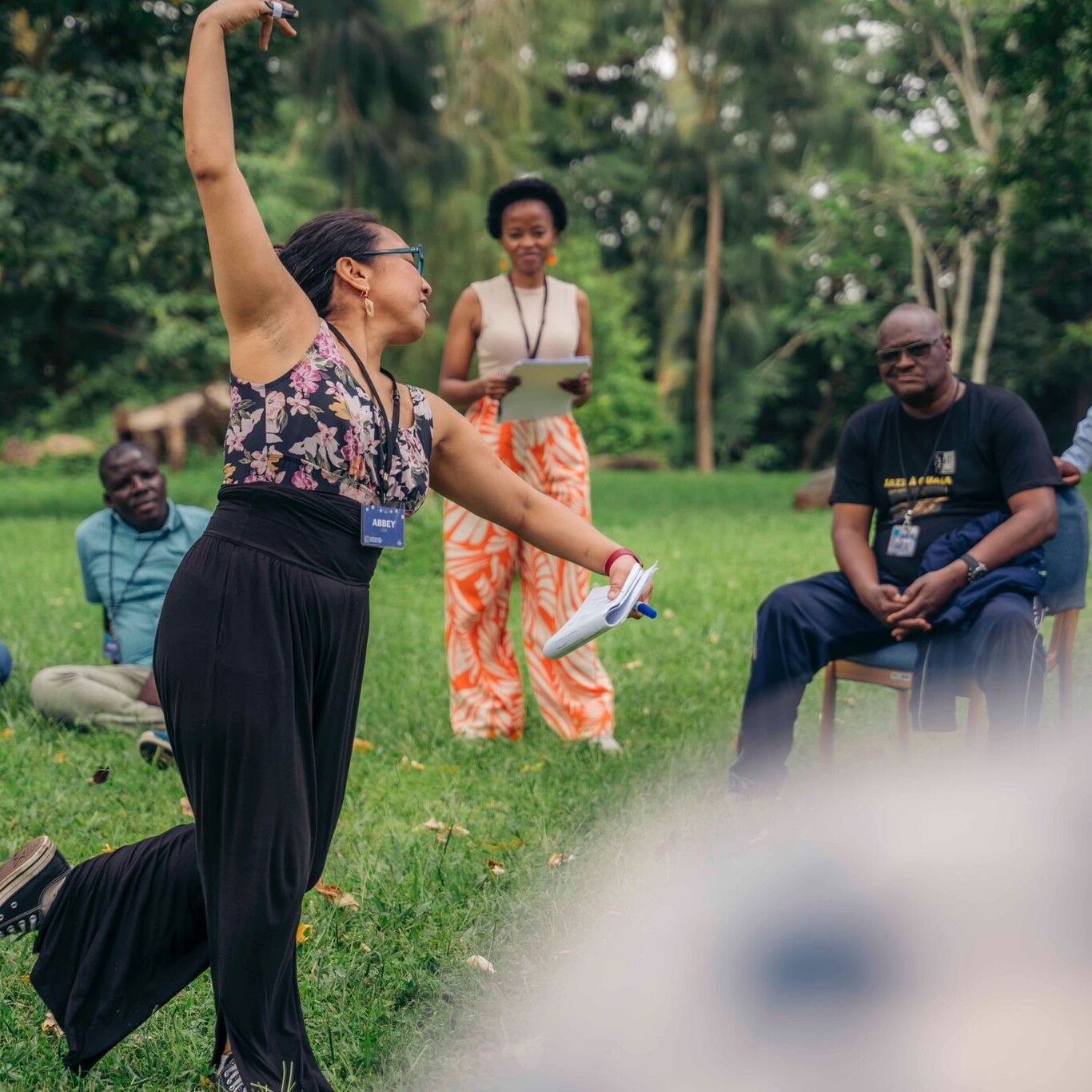In February 2023, Collective Mind hosted our Networks in Action on conflict resolution in networks. The session, hosted by Collective Mind founder, Kerstin Tebbe, built from inputs shared by session participants and followed the frame of “what”, “so what”, “now what”. The ideas shared here are a summary of the participants’ inputs and discussion.

What?: Defining conflict within networks
Among the definitions shared by participants was that conflict can be defined as a disagreement or argument between two or more people, organizations, communities, or within oneself. It can be issue-based, political, or cultural and can stem from a lack of trust, personality differences, varying understandings and perspectives around values, mission, purpose, and lived experience. It can also originate from issues of inequity, underrepresentation, and personal and global power dynamics.
Many participants also viewed the question around conflict through a more constructive lens. For example, they expressed the importance of shifting the normal framing of conflict as inherently bad or destructive and more towards recognizing its potential to be generative and to expect and embrace its place in the messiness of networks. They also agreed that the process of resolving conflict is just as vital as the conflict itself. Conflict resolution can be handled poorly, or it can be navigated well — with self-awareness, empathy, and well-established, trusting relationships as integral aspects of resolution processes. Equally as important, especially for network managers, is to employ a multitude of tools and approaches to move through conflict by, for example, invoking the network’s shared purpose, considering both sides of a conflict, and learning to discern the differences between preferences, needs, and values of the parties involved.
So what?: What processes or mechanisms do you use to manage or resolve conflicts in your network?
Participants shared a variety of means and methods to handle conflict within their networks, some also acknowledging a lack of any established mechanisms or conflict resolution processes. The processes and methods shared during the session generally fit under a few common themes:
Based in established/establishing good practice and guidelines
-
- Taking proactive steps to set norms and have a clearly communicated shared purpose and common ground
- Creating awareness for what is rooted in best practices/guidelines
- Pulling guidelines from a governance manual on how you get a seat at the table
- Utilizing non-violent communication, group norm development/interaction guidelines, perspective-taking and reflective practices, validating dissenting voices, and providing a parking lot for future agendas or discussions that are off-topic
- Maintaining elections to change leadership every few years
- Trying to make the resource-sharing process more competitive/more meritocratic
- Being clear and explicit about commitments
- Creating a space for all network members that accommodates and fosters inclusive relationships (no one should feel excluded from the network)
- Finding connections between appropriate principles and best practices to approach work
Oriented towards upholding network culture and values
-
- Shifting from an “I” to a “we” mentality within the network
- Finding each other’s strengths and complementing each other’s gaps
- Not allowing criticism and “gossip” among members in the network
- Celebrating, honoring, and possibly rewarding collaborative work that is well done
- Promoting successful practices
- Allowing for multiple perspectives and challenging one another
- Naming race equity from the start
- Accepting the fact that not everyone will get supported in the network
- Cultivating self-awareness and group awareness of the dynamics within the network
- Avoiding the need for power and leadership to benefit your own organization versus what benefits the network
Focused on health and well-being of the network and its participants
-
- Allowing space for relaxation, to de-stress people and come out with creativity
- Utilizing healing processes
- Facilitating meditating, breathing, and restorative health practices
- Using positive thinking and approaches that start with assuming “positive intent”
Now what?: What are your network’s biggest challenges or gaps around conflict resolution?
When asked about their biggest hurdles to resolving conflict, participants shared issues such as a lack of relationship-building due to the pandemic, the prevalence of silos and competition, a lack of processes, and disconnects between appropriate principles and best practices to approach work. They also again noted the perception that differences in perspectives tend to be associated with negative outcomes.
Highlights from the conversation
In addition to the experiences and ideas shared above, there were also cross-cutting observations and insights throughout the session. Notably, a key observation was that often with the nature of networks as collective action models, it is assumed that everyone wants to work together and collaborate. While true in some networks, it tends not to be true across others or throughout the entirety of any network’s membership. This can often mean that interpersonal conflict can not only arise but go unaddressed amongst the parties involved. This elevates the necessity of carefully and thoughtfully facilitated spaces and processes through which people can voice and manage conflict.
Another highlight was that the change that many networks seek can only be achieved with the presence of conflict and that moving away from it, avoiding it, or framing it in a negative light does a disservice to the network’s mission. The richness and diversity of bringing different perspectives and opinions together are what enables the network to grow and move forward to achieve shared goals.
Lastly, conflict exists in all organizations, but in the layered and complex environment of networks, it may be even more present or more pronounced. In the context of networks, the roles are non-traditional and non-hierarchical; leadership is distributed and shared. This can contribute to different understandings of the network’s roles, perceptions of power, and structures (e.g., facilitators versus implementers/developers) and can lead to tension and conflict. In some cases, conflict can arise from increased competition amongst network members for limited resources and can dampen collaboration.
Regardless of the conflict, or the ultimate combination of processes and methods used to resolve them, the priority should be to shift people’s mindset of conflict away from believing it is destructive to recognizing its potential to be generative, particularly when trying to harness the diversity of networks.
View the recording of the session here.
Collective Mind hosts regular Networks in Action sessions to unpack critical network concepts with our global learning community. Each session focuses on a specific network concept and through a series of facilitated reflection exercises, builds out the concept by crowdsourcing ideas and experiences.
Sign up for the Collective Mind newsletter to receive these in your inbox!

Collective Mind believes in the power of networks to create social change through collective action.
We are a dedicated team of consultants committed to supporting and empowering networks, network practitioners, and network donors to be more effective and impactful.
originally published at Collective Mind

Network Weaver is dedicated to offering free content to all – in support of equity, justice and transformation for all.
We appreciate your support!



